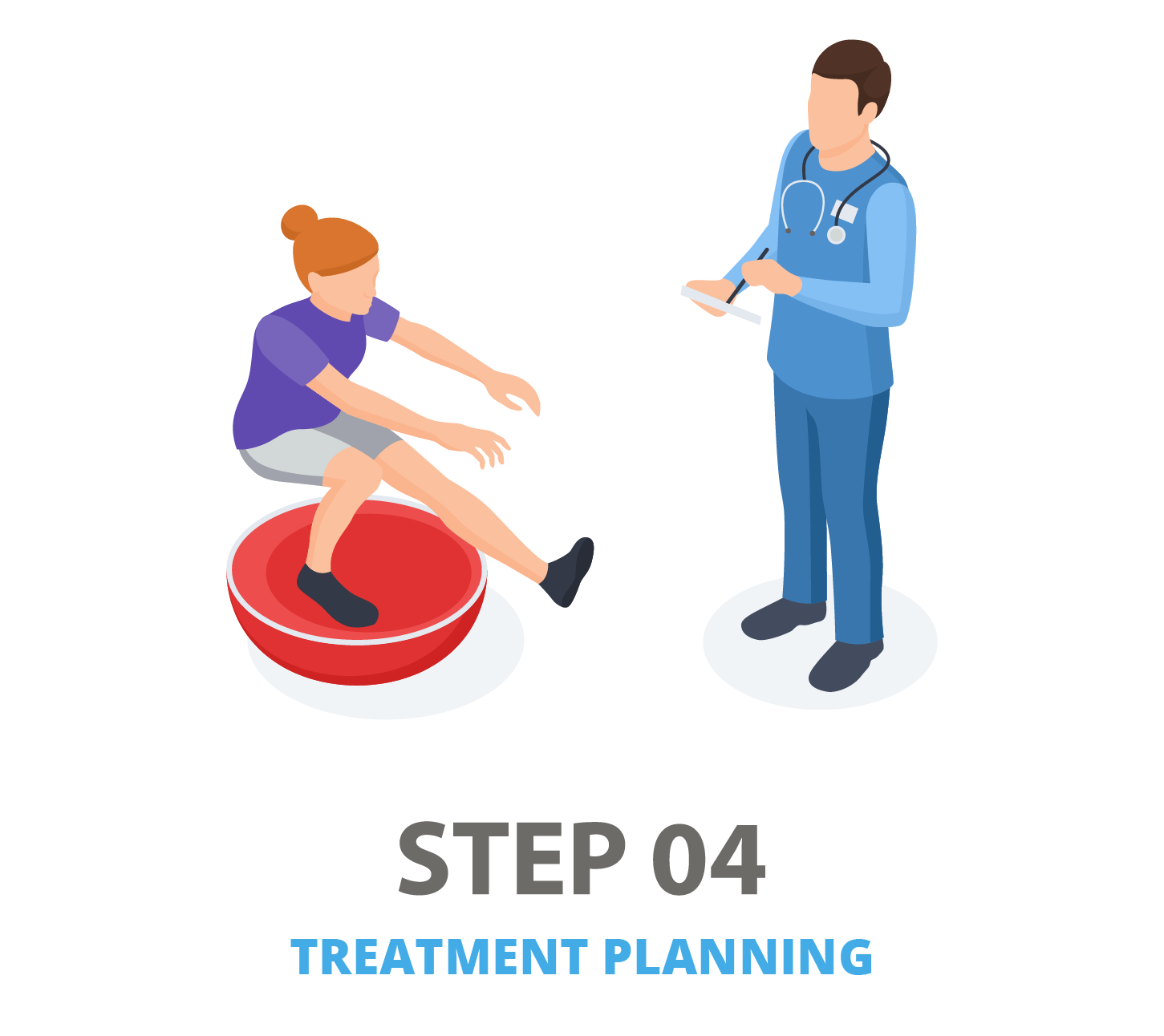Vestibular Rehabilitation

Get back to balance
Vestibular Rehabilitation
Vestibular Rehabilitation Therapy (VRT), commonly referred to as balance retraining therapy, is an exercise-based intervention aimed at addressing balance disorders. This non-invasive and painless method effectively manages a variety of causes of dizziness, vertigo, and balance difficulties by tailoring exercise programs to retrain the body’s balance systems.
Common Causes of Dizziness and Imbalance Treated by VRT
- Aging
- Neck dysfunction
- Head injuries
- Central nervous system disorders
- Neuropathy (numbness in the feet)
- Vestibular hypofunction or loss
- Benign Paroxysmal Positional Vertigo (BPPV)
Balance disorders can lead to unexpected effects on the body, including involuntary eye movements. The reflex that causes the eyes to move in the opposite direction of head movements, which helps maintain focus, can be disrupted when balance is compromised. VRT is essential in relieving eye-related symptoms such as eye fatigue, blurred vision, double vision, light sensitivity, and difficulties with reading.
Benefits of Vestibular Rehabilitation Therapy
- Alleviates dizziness and balance problems
- Decreases the risk of falls
- Provides relief from nausea and headaches
- Encourages a more active lifestyle
- Boosts stamina
- Addresses eye fatigue and vision concerns
Vestibular rehabilitation therapy involves a physiotherapist developing a personalized treatment plan that may include balance training exercises, gait training, head movement sequences, gaze stabilization exercises, functional training, and more.
If balance issues are caused by misaligned bio-crystals in the inner ear, a physiotherapist can guide individuals through specific head movements to dislodge these crystals and restore balance.
The time required for resolution can vary; some issues may be resolved in a single session or within days, while others may require a longer treatment period. It is advisable to begin treatment promptly, as delaying intervention can lead the brain to adapt to negative balance changes, which may extend the retraining process.
The 9 step Rehabilitation process

Initially, a comprehensive assessment and evaluation of the patient’s condition are performed. The physical therapist collects detailed information about the patient's medical history, symptoms, and functional challenges. Physical examinations and tests are carried out to pinpoint the underlying problems.

Following the assessment, the physical therapist provides a diagnosis, identifying the primary issues and crafting a treatment plan tailored to the patient’s specific needs.

The physical therapist and patient collaborate to establish SMART (Specific, Measurable, Achievable, Relevant, Time-bound) goals. These objectives might involve enhancing range of motion, alleviating pain, building strength, and improving overall function.ilored to the patient’s specific needs.

A thorough treatment plan is created by the physical therapist, based on the assessment findings and established goals. This plan may encompass various approaches, including therapeutic exercises, manual therapy, modalities (such as heat or ice), and patient education

The treatment plan is actively implemented in this phase. Patients engage in exercises and activities designed to boost strength, flexibility, balance, and functional capabilities. Manual therapy techniques may also be utilized to address specific concerns.

The therapist consistently monitors the patient’s progress throughout the therapy. Adjustments to the treatment plan are made as needed, depending on the patient’s response and any changes in their condition.

Education plays a vital role in physical therapy. Patients are informed about their condition, body mechanics, and techniques for preventing future injuries. They may also receive instructions on home exercises.

A home exercise program is often provided to support the progress made during therapy sessions. Adhering to this program is crucial for achieving the best results.

As the patient advances, the focus may shift to functional training. This involves activities that simulate daily tasks, helping the individual regain the ability to perform everyday activities with greater ease.

1 - Assessment and Evaluation
Initially, a comprehensive assessment and evaluation of the patient’s condition are performed. The physical therapist collects detailed information about the patient's medical history, symptoms, and functional challenges. Physical examinations and tests are carried out to pinpoint the underlying problems.
2 - Diagnosis
Following the assessment, the physical therapist provides a diagnosis, identifying the primary issues and crafting a treatment plan tailored to the patient’s specific needs.
3 - Goal Setting
The physical therapist and patient collaborate to establish SMART (Specific, Measurable, Achievable, Relevant, Time-bound) goals. These objectives might involve enhancing range of motion, alleviating pain, building strength, and improving overall function.ilored to the patient’s specific needs.
4 - Treatment Planning
A thorough treatment plan is created by the physical therapist, based on the assessment findings and established goals. This plan may encompass various approaches, including therapeutic exercises, manual therapy, modalities (such as heat or ice), and patient education
5 - Therapeutic Interventions
The treatment plan is actively implemented in this phase. Patients engage in exercises and activities designed to boost strength, flexibility, balance, and functional capabilities. Manual therapy techniques may also be utilized to address specific concerns.
6 - Monitoring and Adjustments
The therapist consistently monitors the patient’s progress throughout the therapy. Adjustments to the treatment plan are made as needed, depending on the patient’s response and any changes in their condition.
7 - Patient Education
Education plays a vital role in physical therapy. Patients are informed about their condition, body mechanics, and techniques for preventing future injuries. They may also receive instructions on home exercises.
8 - Home Exercise Program
A home exercise program is often provided to support the progress made during therapy sessions. Adhering to this program is crucial for achieving the best results.
9 - Functional Training
As the patient advances, the focus may shift to functional training. This involves activities that simulate daily tasks, helping the individual regain the ability to perform everyday activities with greater ease.
Are you ready to start your healing Journey?
Book an Appointment
Our team of experts will accurately diagnosed and determine the most efficient healing Journey for your specific ailments. So what are you waiting for? Take the first step towards a pain-free and healthy life today!
